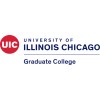
Grazoprevir/Elbasvir for Genotype 1b Chronic Hepatitis C After Liver or Kidney Transplantation
Chronic Hepatitis cLiver Transplant Infection1 moreGrazoprevir/elbasvir combination therapy is highly effective in the treatment of genotype 1b chronic hepatitis C, and the drug-drug interaction with central immunosuppressant, such as tacrolimus, should be manageable. The aim of this study is to assess the efficacy and tolerability of grazoprevir/elbasvir combination therapy in treating genotype 1b chronic hepatitis C after liver or kidney transplantation.

Zepatier in Patients With Substance Use
Hepatitis CHiv3 moreThe goal of this study is to assess hepatitis C virus (HCV) treatment with Zepatier (elbasvir/grazoprevir) in HCV monoinfected and human immunodeficiency virus (HIV)-HCV co-infected, HCV treatment-naïve or peginterferon/ribavirin-experienced patients with HCV genotype 1a, without baseline NS5A resistance, 1b, or 4 and substance use in urban, multidisciplinary specialty clinics.

Impact of Hepatitis C Therapy and Bone Health
Human Immunodeficiency VirusHepatitis CAn evaluation of the impact of Elbasvir and Grazoprevir (EBR/GZR) HCV therapy on the heart risk and bone health of HCV mono-infected and HIV/HCV co-infected patients.

MHH-HCV-NPM-Neuropsychiatric Manifestations of HCV-infection During and After Treatment With OBV/PTV/r...
Hepatitis CChronicThis is a 1:1 randomized double-blind Placebo-controlled moncenter Phase IV study to investigate whether a successful interferon-free treatment of HCV-infection with ombitasvir/paritaprevir/ritonavir (OBV/PTV/r) in combination with dasabuvir (DSV) improves the patients' attention ability as compared to placebo as measured with the Att Test Sum Score change from baseline to week 12. A total of 30 patients with non-cirrhotic genotype 1b HCV infection will be randomly assigned to receive 12 weeks verum followed by 12 weeks Placebo (arm A) versus 12 weeks Placebo followed by 12 weeks verum (arm B). Patients will be followed up for 48 weeks.

Ezetimibe as a Safe and Efficacious Treatment for Chronic Hepatitis C
Chronic Hepatitis CTo address the need for more affordable hepatitis C virus (HCV) antivirals with high barriers to viral resistance and strategies to shorten the current treatment duration, the goal is to develop affordable therapeutic regimens to prevent HCV entry/spread and test the efficacy of those inhibitors for treating HCV infection. The investigators recently discovered that a major cholesterol uptake receptor is required for HCV entry into hepatocytes and that there is already an FDA-approved drug that inhibits cholesterol uptake by this receptor. Importantly the same drug also potently blocks HCV entry in human liver cells both in cell culture and in a small animal model. Further, looking back at people who were previously treated for HCV infection, the investigators found treatment response to be better (i.e. larger viral log reduction) in patients who happened to be taking ezetimibe (EZE). Hence, the objective of this study is to assess whether the FDA-approved drug (ezetimibe) is useful for the treatment of chronic HCV. The investigators predict that when administered as monotherapy ezetimibe will reduce HCV viremia perhaps allowing for viral clearance and that when included in combination treatment regimens that EZE will increase HCV decline resulting in faster viral clearance (i.e. shorter/cheaper direct-acting antiviral [DAA] therapy). To test these hypotheses, the investigators will execute the following aims: (1) Assess the efficacy of EZE monotherapy in chronically HCV infected and predict time to cure; (2) Assess the efficacy of EZE as an adjunct therapy in chronically HCV infected patients undergoing currently approved HCV DAA treatment.

Double Filtration Plasmapheresis for Hepatitis C Virus (HCV) Genotype 1 Patients With High Viral...
Hepatitis CHepatitis C virus (HCV) infection, a leading cause of cirrhosis, hepatocellular carcinoma (HCC) and liver transplantation, affects approximately 170 million individuals worldwide. The prevention of HCV transmission and early intervention of HCV infection are urgently needed to reduce or halt the liver-related morbidity and mortality. Double filtration plasmapheresis (DFPP) has been with widespread use in clinical practice for several indications with plasma filters optimized for the respective elimination targets with excellent safety. By way of the plasma separator, the blood is separated into plasma and cell components. Separated plasma is then led into the plasma component separator where the pores of the plasma component separator further fractionate the plasma into large and small molecular components. The large molecular components, including pathogenic substances, is removed and discarded and the small molecular components, including proteins such as albumin and gamma-globulin, are returned to the patient and mixed with the cell components. After the initiation of pegylated interferon plus ribavirin (Peg-IFN+RBV) therapy, the rapid first phase relates to a significant reduction in virus production and the degradation of free virus particles, which is followed by a second much slower one reflecting the elimination and clearance of infected cells. In HCV patients, high baseline viral load at the initiation of therapy is considered to be a negative predictor for systemic vascular resistance (SVR) for HCV genotype 1 patients. Reduction of baseline viral load by means of therapeutic double filtration plasmapheresis (DFPP) may represent a plausible adjunct for improved antiviral therapy to reduce the virus load with the initiation of treatment in synergy with Peg-IFN and RBV combination therapy. Recently, several clinical studies in evaluating the therapeutic efficacy and safety of DFPP in conjunction with IFN-based therapy were conducted for treatment-naïve genotype 1 high viral load CHC patients, and CHC patients who underwent liver transplantation. These studies showed that patients with DFPP treatment had more favorable HCV early viral kinetics to those without DFPP treatment. Furthermore, all these studies showed excellent safety after DFPP treatment. Therefore, the investigators aimed to conduct a large-scaled randomized controlled trial to evaluate the overall response of DFPP for HCV genotype 1 patients with high viral load.

Standard of Care (SOC) With or Without CTS-1027 in Hepatitis C (HCV) Null-Responders
Hepatitis CPlacebo controlled, double-blind, multicenter study utilizing standard of care (SOC) treatment (ribavirin plus pegylated interferon) in combination with CTS-1027 in genotype 1 chronic Hepatitis C (HCV) patients who were null-responders to previous SOC therapy(ies). Null-responders are defined as patients who failed to achieve a greater than 2 log drop in HCV-RNA (Hepatitis C Ribonucleic acid, also known as "viral load") levels after 12 weeks of treatment (know as an "early virologic response", or EVR) during previous SOC therapy. If, during previous SOC treatment, a patient had a less than 2 log decline in HCV-RNA at Week 12 but greater than 2 log decline in HCV-RNA at any time from Week 12 to Week 24, that patient is not a null-responder, and is excluded from study participation. If, during previous SOC treatment, a Week 12 HCV-RNA was not obtained, the post Week 12 response must have been < 2 log decline (and still HCV-RNA positive) in order for the patient to be defined as a null-responder. Patients will be screened and have up to 4 weeks to qualify for study entry. During this screening period, clinical and laboratory tests will be performed. At Week 0/Day 1, patients will undergo centralized, stratified (based on ethnicity), randomization to one of four treatment arms: SOC + one of three doses of CTS-1027 or SOC + placebo. Study treatment will last 24, 48, or 60 weeks, based on each patient's response to study treatment. SOC + placebo patients who do not show a virologic response after 12 weeks of therapy will be rolled onto SOC + 15mg CTS-1027, while maintaining the study blind.

A Pilot Study of High-Dose, Intravenous Ascorbic Acid (Vitamin C) to Treat Hepatitis C
Hepatitis CThe purpose of this pilot study is to learn whether high doses of ascorbic acid (vitamin c), given intravenously to patients with chronic hepatitis due to infection with the genotype 1 version of the hepatitis C virus, are safe, well-tolerated and able to reduce the amount of virus circulating in the patients' blood.

Alisporivir (Deb025) and Boceprevir Triple Therapies in African American Participants Not Previously...
Hepatitis CThis study will assess the safety and efficacy of alisporivir (ALV) and boceprevir (BOC), each in combination with Peginterferon alfa-2a (PEG) and Ribavirin (RBV), in African American participants who have never received treatment for their chronic hepatitis C (HCV) genotype 1 infection.

Safety and Biological Activity of InfraDure Biopump Secreting Sustained Interferon in HCV Patients...
Hepatitis CThis will be a Phase I-II, open-label, single center, uncontrolled, dose-escalation study. The trial will be conducted in Israel at the Tel Aviv Sourasky Medical Center. All subjects will receive autologous InfraDure Biopump (micro-organ of dermis processed ex vivo transduced with genetic construct containing the gene for interferon)tissue implants intended to provide sustained production and delivery of therapeutic levels of INF for up to twenty four (24) weeks following INFRADURE Biopump implantation. Follow up will continue for a total of two years post INFRADURE Biopump implantation
